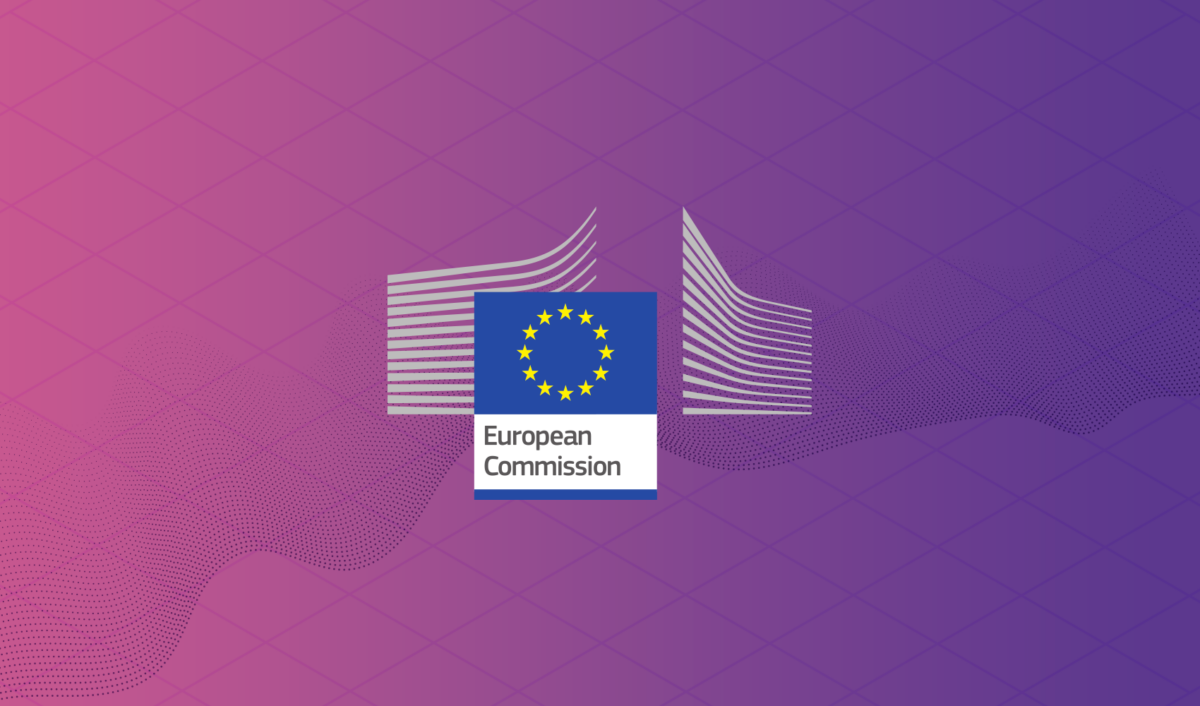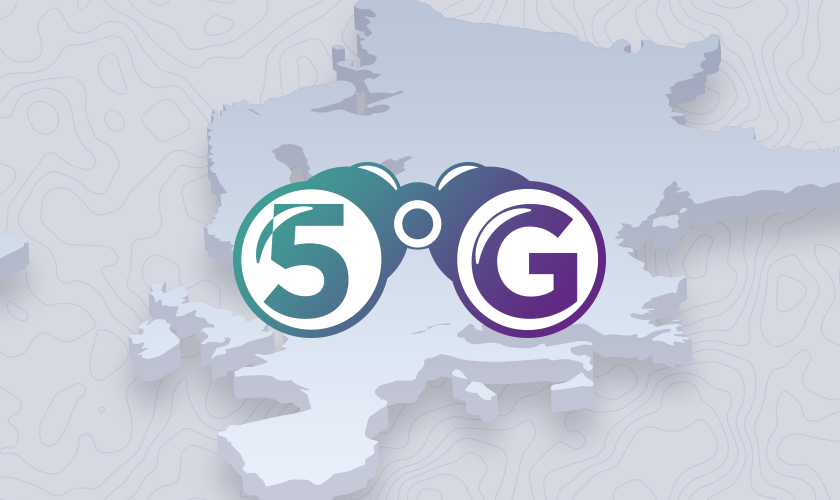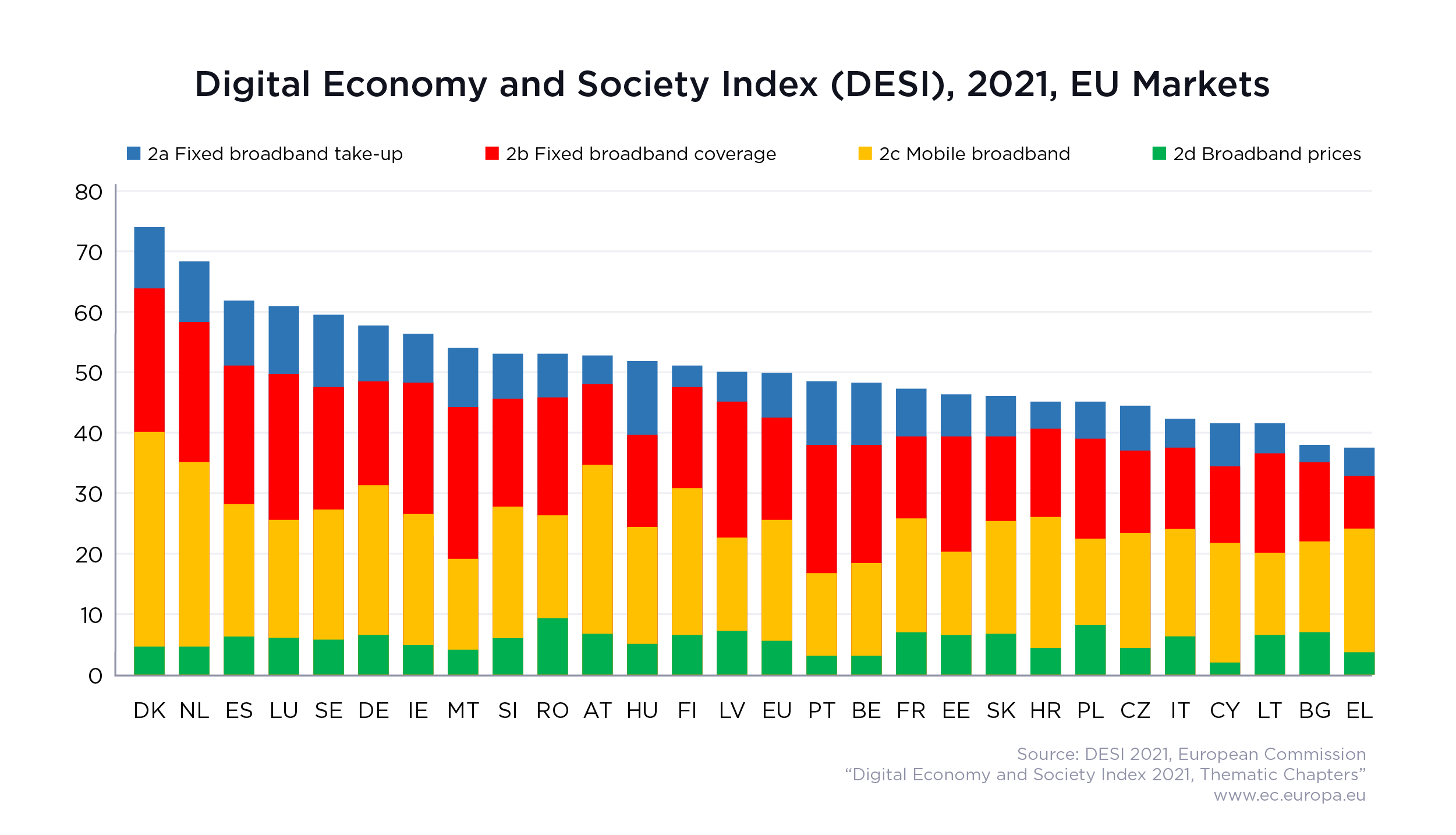The characteristics of places might not define the identity of people living there, but they affect the daily life of every citizen and can prevent them from reaching their full potential and the best life. Persisting territorial disparities, related to phenomena such as depopulation or limited access to services, can become even more visible by observing places rather than individuals. In fact, growing territorial inequality, further exacerbated by the COVID-19 pandemic, limits on people’s lifestyle and life choices, and creates a feeling of being left behind.
The Joint Research Centre of the European Commission recently published a report focused on understanding and identifying territorial disparities and challenges in the EU across a variety of sectors, including access to broadband and the performance of the digital connection, using the Speedtest® by Ookla® Global Fixed and Mobile Network Performance data for Q4 2020. A full comprehension of these challenges and their interlinkages is essential to produce evidence to improve policies, especially for the benefit of those living in vulnerable conditions, in line with the principle of leaving no place and no one behind.
Key findings
High-speed broadband increasingly represents an essential infrastructure to drive the economic and social development of territories. Therefore, the lack of broadband network or poor access to a high-speed connection might cause significant disparities among places and citizens and leave some areas behind in terms of access to services and opportunities, diminishing the quality of life of residents. The connectivity gap, often recognized as an urban-rural digital divide, represents an important challenge to face for some countries and policy makers and may require a joint effort by both public and private initiatives.
Results show that significant differences exist in network speed across the EU-27 countries. Territorial disparities are even more relevant, with most Member States in urban areas enjoying easy access to the highest fixed broadband available (> 100 Mbps), whereas in rural areas a significant percentage of residents have access to an average speed below the minimum standard of 30 Mbps. Only very few countries show access to over 100 Mbps broadband for rural populations (Denmark, Sweden, the Netherlands, Luxembourg).
Regarding mobile broadband, the average speed is generally lower than fixed broadband in all countries, with only a few areas having more than 100 Mbps average speed. Interestingly, the Alpine region across France, Italy and Austria appears to have better connectivity with mobile broadband (over 30 Mbps) than with fixed broadband (under 30 Mbps). The same pattern can be observed in Central Italy and Sardinia, Croatia, and partially in Greece.
To strengthen the evidence of such urban-rural digital divide, the spatial patterns of access to broadband were combined with the population density and the classification of degree of urbanization of municipalities in cities, towns and rural areas (see Figure 01). Results confirm that urban areas present the highest speed in broadband connection, revealing how the areas already most connected in terms of physical networks (i.e., with roads and railways) are also the most connected from the digital point of view. Access to a good broadband connection is most problematic in remote municipalities (with 45 minutes or more from the nearest city by drive), where the average speed is significantly lower than the national averages, especially in countries such as Belgium, Spain, France, and Portugal.
To explore the urban-rural digital divide further, the analysis employed Machine Learning to identify patterns of similarities in terms of vulnerabilities across all areas, regardless of their degree of urbanization, considering the performance of the broadband infrastructure, the population distribution and the remoteness classification of all areas. The areas (belonging to group 0 in Figure 2) are characterized by low speed, high latency, low population density, remoteness, and are identified as the most vulnerable places. However, this analysis also showed that the bad performance of broadband networks is not limited to rural areas. This means that the digital divide is not merely a matter of urban-rural, but mostly a matter of cities versus non-cities: places that would not be considered as disconnected from the physical perspective (not remote areas, but towns close to cities) can still be disconnected from the broadband perspective.
Digitalization can be an opportunity only if its rollout is quick enough to enable rural businesses to remain competitive. However, it is useless without a parallel development of digital literacy and skills for residents in rural areas. Furthermore, digital connectivity is only one player in the game, and it cannot alone overturn the depopulation trends and the other vulnerabilities affecting rural areas.
Without policy support, a lack of or poor access to high-speed broadband might leave some areas behind. Access to broadband and data might help to foster new business and economic activities, especially in vulnerable areas such as rural regions. Exploiting the potential that connectivity and digitalization represent for education and training, cooperation and networking, access to services and markets, can make these areas more attractive to people and businesses.
Cohesion Policy will support the implementation of the EU’s digital agenda. In particular, European Regional and Development Fund investments will focus on digitalization of services for businesses and citizens and rollout of the high-speed broadband. The support will go where it is most needed, i.e. areas where there is a weak take-up of digital technologies or no, or very slow, or very expensive, broadband access or where there is not enough commercial potential to attract private investors.
To read more about this work, the full report is available here.
We are grateful to Patrizia Sulis for her work with our data within the European Commission’s report and guidance in composing this article. For more information, please contact Patrizia Sulis – Scientific Officer – Joint Research Centre, European Commission.
Ookla retains ownership of this article including all of the intellectual property rights, data, content graphs and analysis. This article may not be quoted, reproduced, distributed or published for any commercial purpose without prior consent. Members of the press and others using the findings in this article for non-commercial purposes are welcome to publicly share and link to report information with attribution to Ookla.











